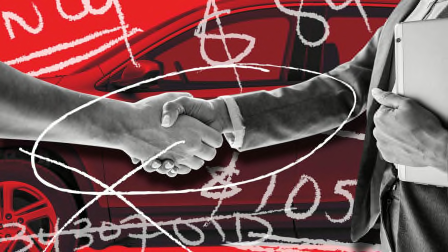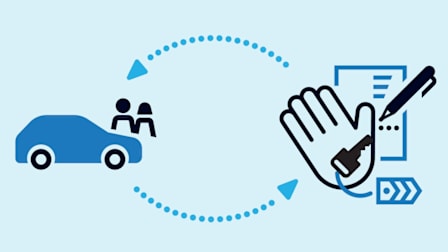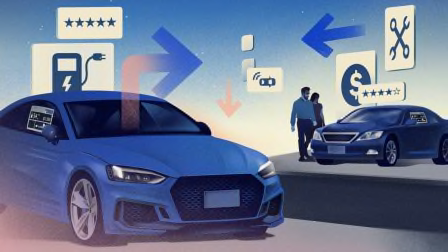How to Finance a Used Car
These expert tips will help you save on loan costs and more

Buying a used car can be a lot less expensive than buying a new one, especially as new-car prices are increasing in response to new tariffs on cars and car parts. But those savings can quickly evaporate if you need to finance your purchase.
Check Your Credit Score
Whether buying new or used, the best interest rates generally go to those with the best credit. According to Experian, the credit reporting agency, the average interest rate for a used-car loan in the first quarter of 2025 was 6.82 percent for someone with the highest credit rating, and 21.58 percent for someone with the lowest credit rating. The difference between those two ratings could reach into the tens of thousands of dollars over the course of a traditional loan.
Tip: Check your credit score periodically to see whether there are any areas that need improvement. Use free credit-reporting services like annualcreditreport.com, Credit Karma, or Experian.
Melinda Zabritski, senior director of automotive financial solutions at Experian, says that in general, the best ways to keep your credit score in good shape are to pay bills on time and keep the balances on your credit cards as low as possible. (Learn how to get the best car-loan rate despite a low credit score.)
Get Preapproved for a Loan
This is good advice for any car purchase, and it’s essential if you’re financing a used car bought from a private seller. Getting preapproved also gives you a baseline to start comparing rates and gives you the option of declining a dealer’s financing if the terms aren’t favorable.
Be sure to shop around. Online vendors like Carvana offer online prequalification, but you may get a better rate from your own bank or credit union.
Tip: Don’t worry about making multiple inquiries for auto loans. They may be excluded from your credit report. If not, they’re likely to be counted as only one inquiry if they’re all made within the same 30-day period.
Maximize Your Down Payment
Put as much money down as you can comfortably afford, Bell says. The more you pay up front, the less money you’ll lose to interest payments. For example, if you put $3,000 down on a $29,000 car, you’ll pay a total of $32,769.25 on a 48-month, 6.8 percent APR loan (not including sales taxes or fees, which vary widely by state and can add thousands to the price). If you put down $5,000, you’ll save nearly $300 over the life of the loan and make lower monthly payments.
Tip: If you compare how much interest your money would make in a savings account, it’s probably less than what you would save by making a larger down payment.
Avoid a Long-Term Loan
A 60-, 72-, or 84-month loan may keep monthly payments low, but you’ll pay more in interest over time and probably also pay a higher rate. Using recent interest rates from the Navy Federal Credit Union as an example, you could finance $23,000 at 4.99 percent over 36 months for a total of $24,980. A 60-month loan would incur a higher 5.49 percent rate and an overall payment $1,541 higher than the shorter-term loan.
Tip: Choose the shortest loan term you can afford. This will minimize interest payments and reduce the likelihood that you’ll find yourself “upside down,” or owing more on the loan than the car is worth.
Other Used-Car Considerations
The following advice will help you avoid buying an unreliable used car and paying too much, which will drain your finances and could affect your future car-buying options. Read on for more expert advice.
Check the vehicle history. You don’t want to be on the hook for paying off a loan if it turns out there are significant problems with the car or the resale value plummets due to hidden crash damage.
Vehicle history reports can fail to indicate flood, collision, or other damage, so checking more than one for any car you’re serious about buying can help eliminate potential blind spots.
Reports from CarFax can cost $25 to $45 (many dealers include them for free), and VINcheck is offered for free by the National Insurance Crime Bureau. The National Motor Vehicle Title Information System also offers links to numerous approved vehicle history providers. Always have a vehicle inspected by a trusted mechanic before you buy it.
Say no to dealer add-ons. Once you’ve agreed on a price, the dealer may try to persuade you to buy an extended warranty. Don’t consider it before making sure the original factory warranty has expired. Certified pre-owned (CPO) cars come with extended coverage, so you may not need more. In general, buying an extended warranty is usually not worth the money. Choosing a car known for reliability is a better investment.
Instead of purchasing an extended warranty, consider starting a rainy day fund for maintenance. That money could earn a little interest if it’s in the right type of account, and you can apply what you don’t use to the purchase of your next car. (Learn more about avoiding dealer add-ons.)
Factor in repair costs. If you’re buying an older vehicle, you’ll definitely save money over the price of a new car. But don’t forget the inevitable cost of replacement tires, brake pad replacements, and unexpected repairs, which vary widely depending on the model, its age, and how it has been used.
Choosing a model from CR’s list of recommended used cars may help limit repair costs. The CR Used Car Marketplace shows owner satisfaction and reliability right within the listings. Whichever car you choose, come up with a rough annual budget for upkeep by using our guidelines on car maintenance and our Car Repair Estimator. Add that to the estimated annual cost to finance the car to find out how much money you’ll actually save by buying used.
Editor’s Note: This article has been updated since it originally appeared in the February 2023 issue of Consumer Reports magazine.




















